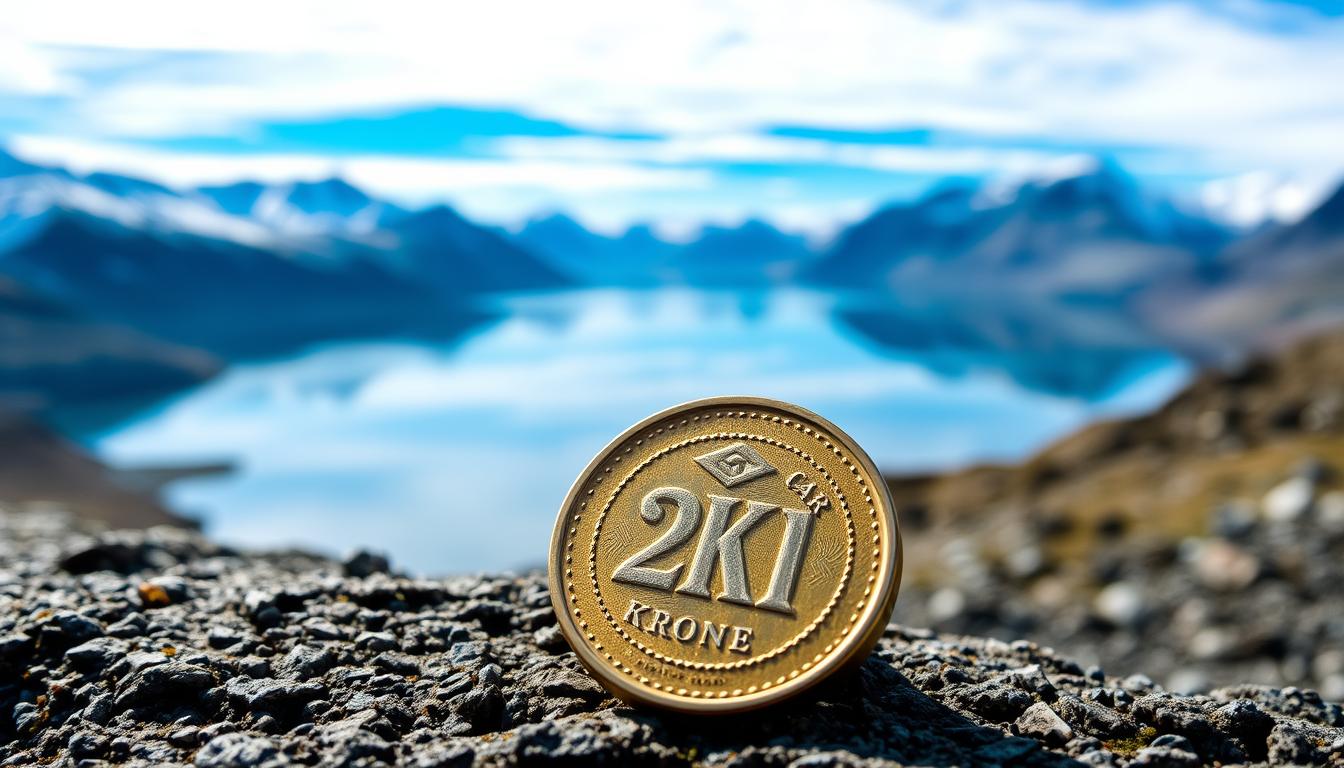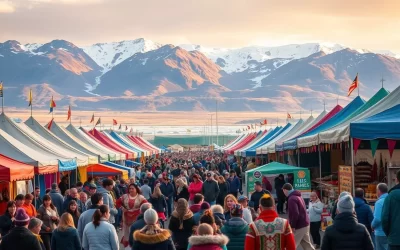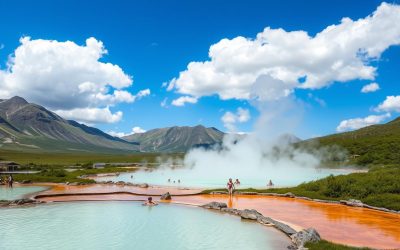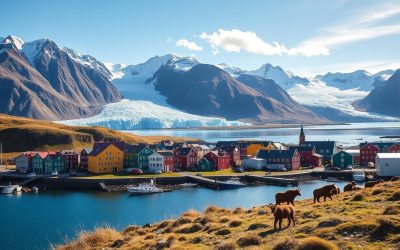Ever wondered how to handle your finances while exploring one of the world’s most remote destinations? Planning your money matters in advance can make your trip to Greenland smoother and more enjoyable. This guide will help you navigate the local currency and payment methods with ease.
In Greenland, the official currency is the Danish Krone (DKK). It’s the same currency used in Denmark and the Faroe Islands. The DKK has a fixed exchange rate with the Euro, which simplifies conversions for international travelers. Whether you’re exchanging cash or using cards, understanding the local financial landscape is essential.
From modern payment options to traditional cash handling, this guide covers everything you need to know. Prepare your finances before you arrive, and you’ll be ready to focus on the breathtaking landscapes and unique experiences this Arctic destination offers.
Key Takeaways
- The Danish Krone (DKK) is the official currency in Greenland.
- The DKK has a fixed exchange rate with the Euro.
- Plan your finances before traveling to ensure a smooth trip.
- Credit cards are widely accepted, but cash is useful in smaller settlements.
- ATMs are limited, so withdraw money in major towns.
Introduction to Greenland’s Currency Landscape
Navigating the currency landscape in a unique place like Greenland requires some preparation. The Danish Krone (DKK) is the official currency here, and it plays a central role in daily transactions. Understanding its role and history can help you manage your finances more effectively during your trip.
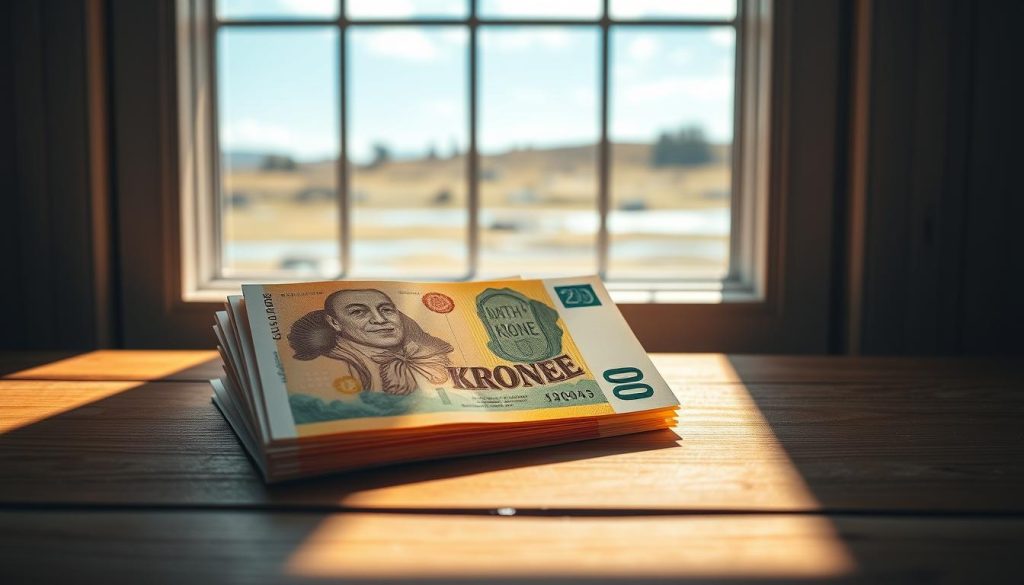
Understanding the Role of the Danish Krone (DKK)
The Danish Krone is tied to the Euro with a fixed exchange rate of 7.46 DKK to 1 Euro. This makes it easier for international travelers to calculate costs. Whether you’re using cash or cards, the DKK is widely accepted across the region.
Local banks are essential for handling transactions, especially in smaller settlements. While credit cards are common in major towns, having some cash on hand is always a good idea. ATMs are limited, so plan your withdrawals in advance.
An Overview of Greenland’s Monetary History
Greenland’s financial system has deep historical ties to Denmark. This connection has shaped its monetary policies and practices. Unlike neighboring Arctic destinations, Greenland relies heavily on the Danish Krone, which ensures stability and consistency.
Managing both cash and digital payments is crucial here. The unique blend of modern and traditional payment methods reflects Greenland’s evolving financial landscape. Being prepared will help you enjoy your trip without worrying about money matters.
Currency and Payment Methods in Greenland
Understanding how to handle finances in Greenland ensures a stress-free travel experience. The Danish Krone (DKK) is the official currency, and knowing where and how to use it is key. Whether you’re in bustling towns or remote areas, being prepared with the right payment methods will make your trip smoother.
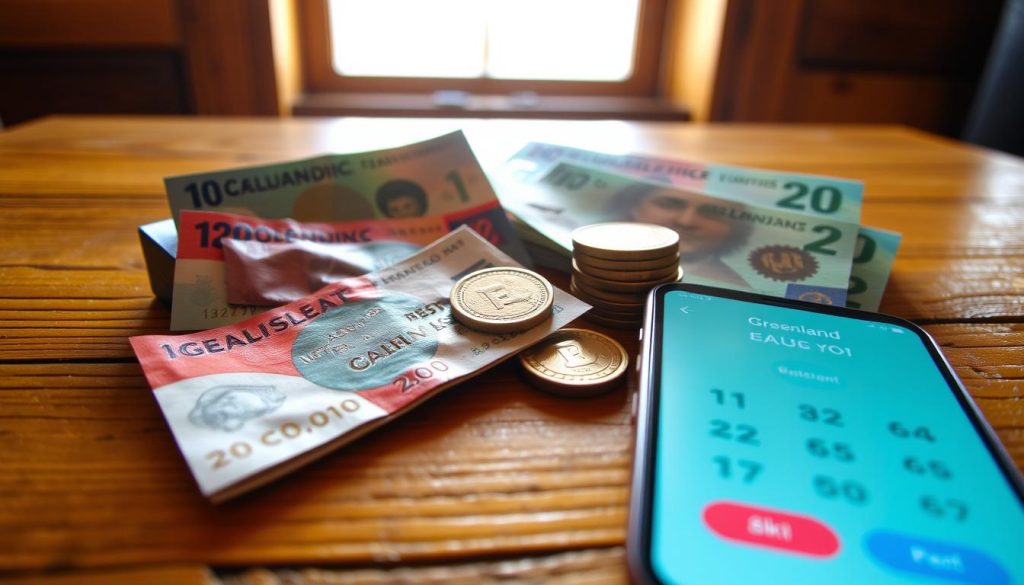
ATMs and Credit Card Acceptance
In major towns like Nuuk, Ilulissat, and Qaqortoq, ATMs are widely available. These machines allow you to withdraw cash in the local currency easily. Most hotels, restaurants, and larger businesses accept major credit cards like Visa, Mastercard, and American Express. This makes it convenient for travelers to pay for services and purchases without carrying too much cash.
However, it’s always a good idea to check with your bank about international transaction fees. Some remote areas might have limited card acceptance, so having a mix of cash and cards is essential. Plan your withdrawals in advance, especially if you’re heading to smaller settlements.
Handling Cash in Remote Areas
While cards are widely accepted in towns, cash is still king in remote areas. Smaller settlements might not have ATMs or card machines, so carrying enough DKK is crucial. This ensures you can pay for essentials like food, transportation, and local crafts without any hassle.
Before traveling, consider exchanging some currency at your local bank or an online platform for better rates. Having a small amount of cash on hand when you arrive can also help with immediate expenses like taxis or snacks. By planning ahead, you’ll be ready to explore Greenland’s stunning landscapes without worrying about payment issues.
Greenland: Ultimate Travelers Guide to Currencies & Payments
Managing your money wisely can make your Arctic adventure seamless and stress-free. When it comes to payments, you’ll need to decide between using cards or carrying cash. Both options have their advantages and drawbacks, depending on where you’re traveling.
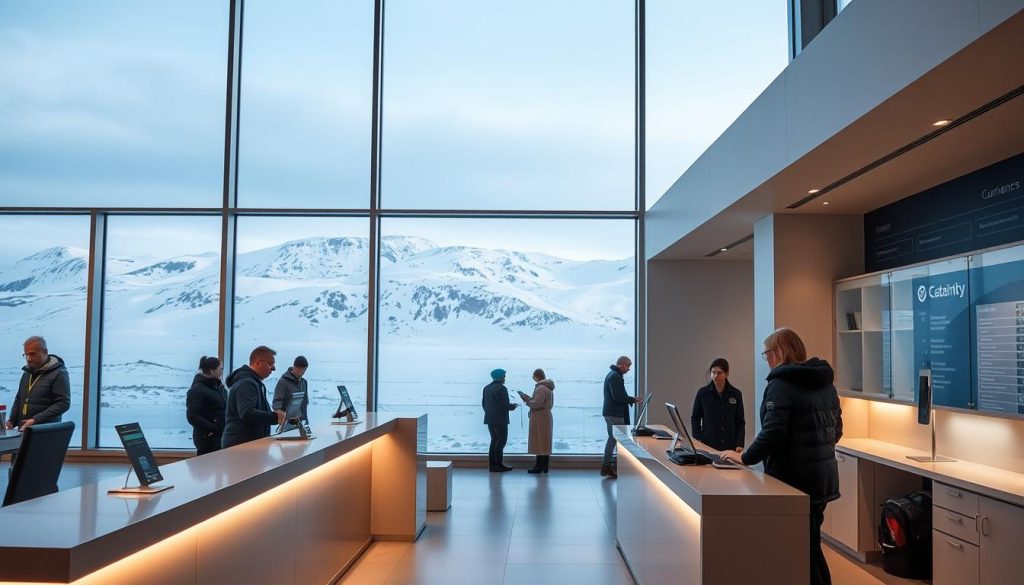
Using cards is convenient in larger towns, where most businesses accept Visa and Mastercard. It’s a secure way to pay, and you won’t need to carry large amounts of cash. However, some remote areas might not have card machines, making cash essential for small purchases or local services.
Carrying cash is particularly useful in smaller settlements. It ensures you can pay for essentials like food, transportation, or handmade crafts. Just remember that ATMs are limited, so plan your withdrawals in advance.
Traveler Tips for Currency Exchange
The Danish Krone (DKK) has a stable exchange rate with the Euro, making budgeting predictable. Before your trip, consider exchanging some currency at your local bank or online for better rates. This will save you time and money once you arrive.
Here are a few practical tips for handling currency exchange:
- Check with your bank about international transaction fees to avoid surprises.
- Carry a mix of cash and cards to cover all payment scenarios.
- Withdraw cash in major towns, as ATMs are scarce in remote areas.
Planning ahead ensures you’re prepared for any situation. With the right mix of payment methods, you can focus on enjoying your trip without worrying about finances.
Understanding Banking Services and Currency Exchange
Understanding banking services in Greenland can make your trip smoother. Local banks play a vital role in managing money and facilitating currency exchange. Knowing how these services work ensures you’re prepared for any financial needs during your stay.
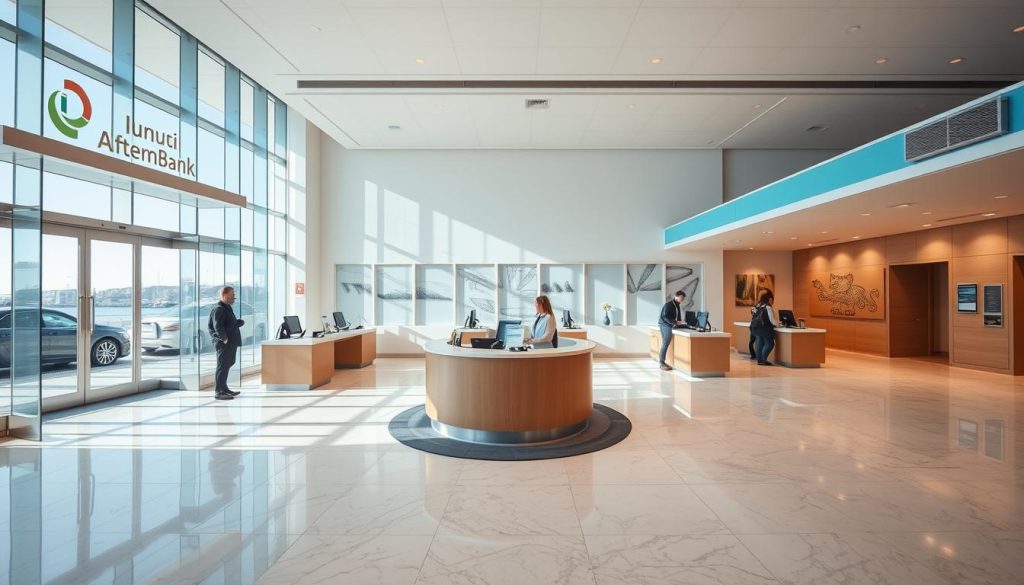
Local Banks and Operating Hours
Grønlandsbanken is the primary bank in Greenland, operating in major towns like Nuuk and Qaqortoq. It offers services such as cash exchange and cheque cashing. However, banking hours are limited, typically from 9:30 AM to 3:30 PM on weekdays and until 3:00 PM on Fridays.
These hours might affect your trip planning, especially if you’re visiting smaller settlements. It’s a good idea to handle your banking needs early in the day to avoid last-minute hassles.
Exchange Rate Insights and Conversions
The Danish Krone (DKK) has a stable exchange rate with the Euro, making budgeting predictable. This stability benefits travelers by simplifying currency conversions. You can exchange money at banks or post offices, though options might be limited in remote areas.
Here are a few tips for managing currency exchange:
- Check exchange rates before your trip to get the best value.
- Carry a mix of cash and cards to cover all payment scenarios.
- Plan your withdrawals in advance, as ATMs are scarce in smaller towns.
By understanding these banking services, you can ensure a smooth and stress-free financial experience during your visit.
Preparing Your Finances for a Greenland Trip
Planning your finances for a trip to Greenland requires careful consideration of limited payment options. In remote areas, banking services are scarce, and digital payment methods may not always be available. Being prepared ensures you can focus on enjoying the stunning landscapes without financial stress.
Budgeting with Limited Payment Options
When traveling to remote parts of Greenland, cash is essential. Smaller settlements often lack ATMs or card machines, making it crucial to carry enough Danish Krone (DKK) for daily expenses. Here are some key strategies to help you budget effectively:
- Carry extra cash for emergencies and small purchases like food or local crafts.
- Plan your expenses in advance to avoid surprises, especially in areas with limited banking services.
- Withdraw money in major towns like Nuuk or Ilulissat, as ATMs are rare in remote regions.
- Prepare a travel budget that includes both modern payment methods and cash-based transactions.
“In Greenland, cash is still king in many remote areas. Always carry enough DKK to cover your needs.”
Accessing local banking services can also be challenging. Most banks operate only on weekdays and close early, so handle your financial needs early in the day. Here’s a quick summary of tips for financial preparation:
| Tip | Why It’s Important |
|---|---|
| Carry Extra Cash | Essential for emergencies and small purchases in remote areas. |
| Plan Withdrawals | ATMs are limited outside major towns, so withdraw in advance. |
| Budget for Both Cash and Cards | Ensures you’re prepared for all payment scenarios. |
| Check Bank Hours | Banks close early, so handle transactions early in the day. |
By following these tips, you can ensure a smooth and stress-free financial experience during your trip. Whether you’re exploring bustling towns or remote settlements, being prepared with the right mix of cash and cards will make your journey more enjoyable.
Integrating Local Payment Culture and Etiquette
Adapting to local payment habits can make your travels more enjoyable and stress-free. In this unique place, understanding the nuances of how locals handle transactions can help you connect better with the community. Whether you’re using cash or a card, respecting local customs ensures smoother interactions.
Here are some friendly tips to help you navigate payment expectations and cultural etiquette during your trip:
- Always greet vendors politely before making a payment. A friendly smile goes a long way.
- In smaller settlements, cash is often preferred. Carry enough Danish Krone (DKK) to avoid inconveniences.
- When using a card, wait for the vendor to indicate it’s ready for payment. This shows respect for their process.
- Understand visa requirements before entering the country. This ensures you’re prepared for any financial needs.
Adopting these local habits not only enhances your travel experience but also fosters positive interactions with the people you meet.
Ensuring Smooth Transactions
To make your transactions seamless, follow these practical steps:
| Tip | Why It’s Important |
|---|---|
| Carry Small Bills | Makes it easier to pay for small purchases in remote areas. |
| Ask Before Paying | Shows respect for local customs and avoids misunderstandings. |
| Check Card Acceptance | Ensures you’re prepared for areas where cards might not be accepted. |
| Learn Basic Phrases | Helps you communicate better during transactions. |
By following these tips, you’ll be well-prepared to handle payments respectfully and efficiently. This approach not only makes your trip smoother but also leaves a positive impression on the locals.
Practical Travel Advice and Currency Safety Tips
Exploring remote areas like Ilulissat requires careful planning, especially when it comes to managing your finances. ATMs can be hard to find, and payment options may be limited. Being prepared ensures you can focus on your trip without worrying about money.
Navigating Remote ATMs and Alternative Payment Methods
In remote areas, ATMs are scarce, so it’s essential to plan ahead. Here are some tips to help you manage your finances:
- Withdraw cash in larger towns like Ilulissat before heading to smaller settlements.
- Carry a mix of cash and cards to cover all payment scenarios.
- Check with your bank about international transaction fees to avoid surprises.
If ATMs are unavailable, consider alternative payment methods like mobile payment apps or traveler’s checks. Always have a backup plan to ensure you’re never stranded without funds.
Ensuring Financial Security on Your Journey
Keeping your money safe is crucial, especially in remote areas. Here’s how you can protect your finances:
- Use a money belt or hidden pouch to store your cash and cards securely.
- Monitor your bank statements regularly for any unauthorized transactions.
- Keep a record of your card details and emergency contact numbers in case of loss or theft.
Checking the exchange rate before your trip can also help you budget effectively. By staying proactive, you can enjoy your journey with peace of mind.
Conclusion
Ensuring your finances are in order before your Arctic adventure can make all the difference. The Danish Krone (DKK) is the official currency, and understanding its use is key to a smooth trip. Whether you’re in bustling towns or remote areas, being prepared with the right payment methods will save you time and stress.
Using both cash and cards offers flexibility. Cards are widely accepted in larger towns, while cash is essential in smaller settlements. The stable exchange rate with the Euro makes budgeting predictable, so plan your currency exchange in advance for better rates.
Local bank services are limited, so handle your financial needs early. Understanding local customs and managing transactions securely will enhance your experience. With careful preparation, you can focus on enjoying the stunning landscapes and unique culture of this remarkable place.
The above is subject to change.
Check back often to TRAVEL.COM for the latest travel tips and deals.
Here are some Tours & Sightseeing suggestions that might pique your interests!
